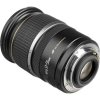Rocky said:
kphoto99 said:
Canon is first and foremost profit generating business.
What do you think will generate more money for them, a 44mm flange distance or a shorter one?
But you say "what about all those millions of EF lenses, Canon would not leave them behind". A very simple answer, "use an extension tube type adapter", maybe one that locks onto a lens semi permanently. This way you can buy an adapter for each of your EF lenses. More money for Canon.
Other people have already listed the advantages of the shorter flange distance for majority of lenses, for the ones that don't benefit from it all you need to design is some space at the back of the lens.
You can see what Canon done with the EF-M mount, bunch of short FL lenses are provided in the native mount and anything longer you use the adapter. Why would Canon not do the same thing for the FF mirroless mount.
Canon is not going to worry about the greying population of photographers what want to stick with 44mm, that is a dead end, they are going to go after the new generation that is not so fixed in its way.
Again, what is going to make more money for Canon, that is the only consideration for them.
Execellent argument.
A new system should be started from a blank paper and take advantage of being started from ground up. If the EF mount is not optimized for the FF mirrorless, then it should not be used for the FF mirrorless. At the same time, Canon should provided adapter for the EF lens to be used in the new FF mirrorless. Just as what Canon has done for the M.
A most recent case is Leica. Leica comes out with tha CL (APS-C) with its own set of lenses. An adapter is provided such that ALL Leica M lenses can be used.
On the other hand, there are plenty of people who upgrade lenses anyways. There were plenty of 85/1.2L owners for example, who went and bought the new 85/1.4L, or 24-70/2.8 who bought IS2, and who will buy IS3 if/when it comes out. How many people would buy an EF50/1.4IS, even though they own any or all of 50/1.4 or 50/1.8 or 50/1.2?
These cameras are geared towards the professional or invested enthusiast, and if Canon can demonstrate that a new lens has an advantage, they'll buy it, whether it's EF mount, EF-X or whatever. You don't need to push hard to get an upgrade out of them on the "money lenses", and the oddball ones, well, they weren't going to rush out and buy a whole new set of them anyways. Not that they'd exist in some new format for years or decades.
Sometimes, it's a better sell to give someone the option of something better than to force them to buy something, and I'm telling you, without any doubt, that there are plenty of people who will absolutely not use an adapter mount. They'll continue using EF, switch completely when the lenses they want are in a new mount (which could be 20 years from now), or leave Canon rather than plunk a flange adapter on their existing lenses.
At the pro sports/wildlife end, how many decades will it take before there is a new mount version of 300/2.8, 400D, 200-400+TC, 600, 800? How many people who have (potentially multiple) $10,000+ lenses will be eager to adopt mirrorless, if they must an adapter -- knowing that at some point they must buy a new lens if they don't want to use an adapter?
People who aren't interested in super telephotos may minimize that market, but it is a very important one to Canon -- just look at their investment in major sporting events -- and providing a credible mirrorless alternative would be a major coup for Canon.
The other thing to consider is that I think the vast majority of people who are obsessed with size have already gone Sony anyways. I mean, if you want a tiny full frame camera with a tiny lens, buy a Sony. It's never going to happen in the Canon world on the lens end of it, because three quarters of its L lens portfolio can't be significantly shrunk due to aperture size and focal length. I mean, there is no such thing as a small 70-200/2.8, 100-400, 200-400, 85mm/1.4, 135/2, 200/2, 100 Macro, or... or...
It is a trap for Canon to make a tiny camera and pair them with tiny (and crappy) kit lenses just to compete with Sony. That's a fight they'll lose, if only because Sony was there first, by several years, and what would be the compelling reason for that market to switch back? It's not like Canon will be able to make awesome tiny kit lenses. Instead, they should continue to make awesome tiny APSC lenses, which are actually physically possible, paired with great, tiny APSC mirrorless cameras -- and leave full frame as a professional product for people who value other factors over size.

